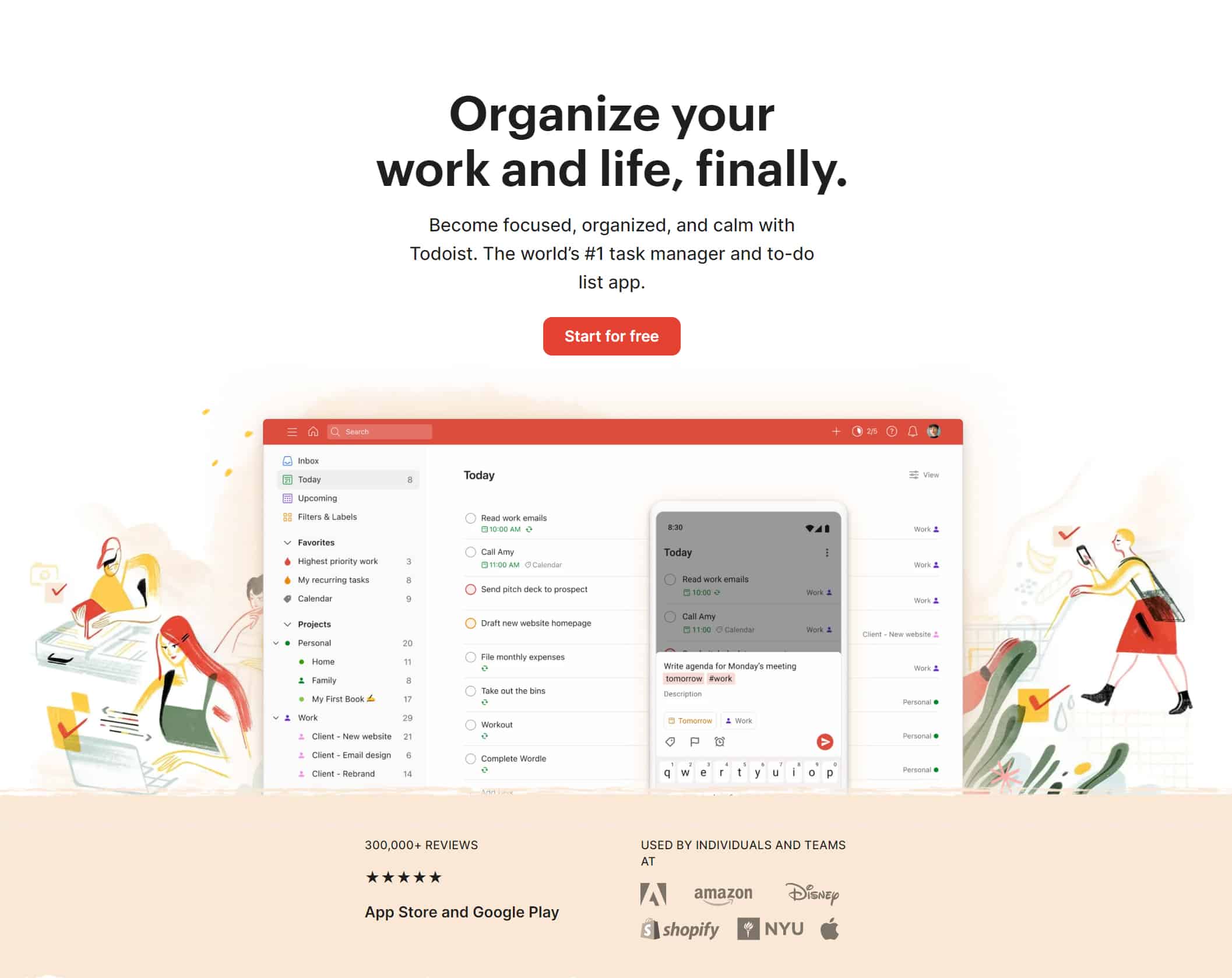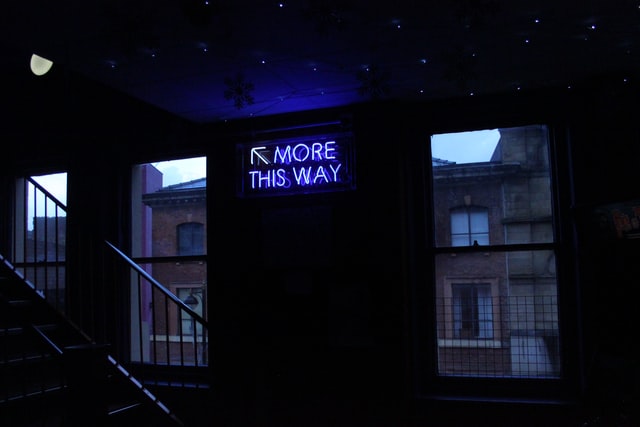Todoist – One Productivity Tool To Rule Them All
Todoist is a hugely popular task management tool that has helped millions of people stay organized and on top of their to-do lists since 2007. As someone who loves trying…

Todoist is a hugely popular task management tool that has helped millions of people stay organized and on top of their to-do lists since 2007.
As someone who loves trying the latest and greatest software, it shocks me to say I’ve been a consistent Todoist user for 12+ years and a paying subscriber for 5+ years.
We’ll be taking a closer look at the Todoist philosophy and tool itself to understand what makes it the single most important tool you should consider for your productivity stack.
The Team Behind Todoist
Two keys to Todoist’s longevity as a leading task management tool are its internal mission and its approach to growth.
“Building the future of work.”
Todoist Mission
According to Doist (the company behind Todoist), the team has operated asynchronously and remote-first for more than a decade. It appears to be working, too, as the company reports a 97% employee retention rate and that half of the remote-first team is operating with 4+ years of tenure.
That means they were living and breathing the multiple timezone, remote-first work lifestyle well before a certain pandemic changed everyone’s work philosophy. It’s also the reason I tend to believe them when they say they are focused on “building the future of work.”
But the true key to their longevity, in my entrepreneurial opinion, is their approach to scaling. In a time when startups regularly take millions of dollars, hire, fire, are acquired, pivoted, and shut down, Doist is completely independent, bootstrapped, and profitable.
When you’re thinking about building your long-term productivity journey around a tool, it’s nice to know that tool doesn’t already have an exit strategy.
Why Todoist is the Ultimate Productivity Tool
Beyond having a great team and a cool business philosophy, what makes Todoist special is the product itself. It’s one of the few tools that can be as simple or complex as your needs require.
Here are some of the reasons I consider Todoist the foundation of the Maximalist toolset:
Multi-Platform
Todoist is available on just about every platform available. This is great because there is nothing more disheartening than a to-do list that you can’t get to because you changed devices or operating systems.
- Desktop – macOS, Windows 10/11, Linux Snap Store, Linux AppImage
- Mobile – iPhone, iPad, Android
- Browser – Chrome, Firefox, MS Edge, Safari, Other Chromium-Based Browsers
- Wearable – Apple Watch, Wear OS
- Email – Gmail, Outlook
What’s more, the mobile version of the app is a fully featured, native app compatible with your phone’s integrated notifications and gestures. It’s not a stripped-down version of the web app.
Flexibility/Customization
Todoist’s standout feature is its flexibility. You can build just about any style of task management on top of Todoist’s clean, blank canvas.
Whether you need more complexity or less complexity, Todoist delivers with the ability to create:
- Lists, kanban boards, calendar integrations
- Projects, subprojects
- One-time tasks, recurring tasks, subtasks
- Assignees, due dates, labels, colors, priority flags, tags/filters, time/geo reminders
Todoist has been flexible enough to accommodate my ever-changing task management needs. I’ve even been able to replicate similar setups to more expensive task management solutions such as Sunsama in Todoist. It lets me embrace these different approaches with simple toggles for changing views on the fly, without needing to start from scratch each time.
Clean, Focused User Interface
As daily users of the tool themselves, the Todoist team cares deeply about the user interface. I’ve read exchanges between the CEO and users addressing requests for new features, where the CEO flat-out said we aren’t going to implement until we can do it the right way.
This is the type of consideration I like seeing in a daily-use tool because it shows the company isn’t going to sabotage the user experience to satisfy every customer complaint. This is in stark contrast to the growth-at-all-costs startups that roll out new feature after new feature to address every 1% use case, killing the usability for the other 99%.
Speed
One often overlooked advantage of expertly designed software is speed. Speed is most noticeable when it’s missing, but there is something to be said for companies that make it a top-tier benefit (Superhuman has built their entire product around speed).
In Todoist, speed manifests itself through near-instantaneous syncing and an array of keyboard shortcuts.
Reminders – One of the biggest advantages of using Todoist is that it helps you stay on top of your tasks and ensures that you never forget something important. With reminders, due dates, and the ability to assign tasks to team members, Todoist makes it easy to stay on track and meet your deadlines.
Reminders, coupled with due dates, enable users to set time-bound objectives and receive timely alerts, preventing procrastination and keeping productivity high.
Integrations – Google Calendar, Slack, MS Outlook
Prioritization/Custom Filters – You can slice and dice your list a number of different ways.
Another great thing about Todoist is that it’s incredibly flexible. Whether you’re a solo entrepreneur or part of a team, Todoist can be customized to meet your needs. You can even use Todoist to manage personal projects, like planning a trip or organizing your home.
In conclusion, Todoist is a fantastic tool for anyone looking to get organized and stay on top of their tasks. With its user-friendly interface, robust set of features, and flexibility, Todoist makes it easy for you to manage your to-do list and keep your productivity levels high. Whether you’re a busy professional, a student, or just someone looking to stay organized, Todoist is the perfect tool for you.

